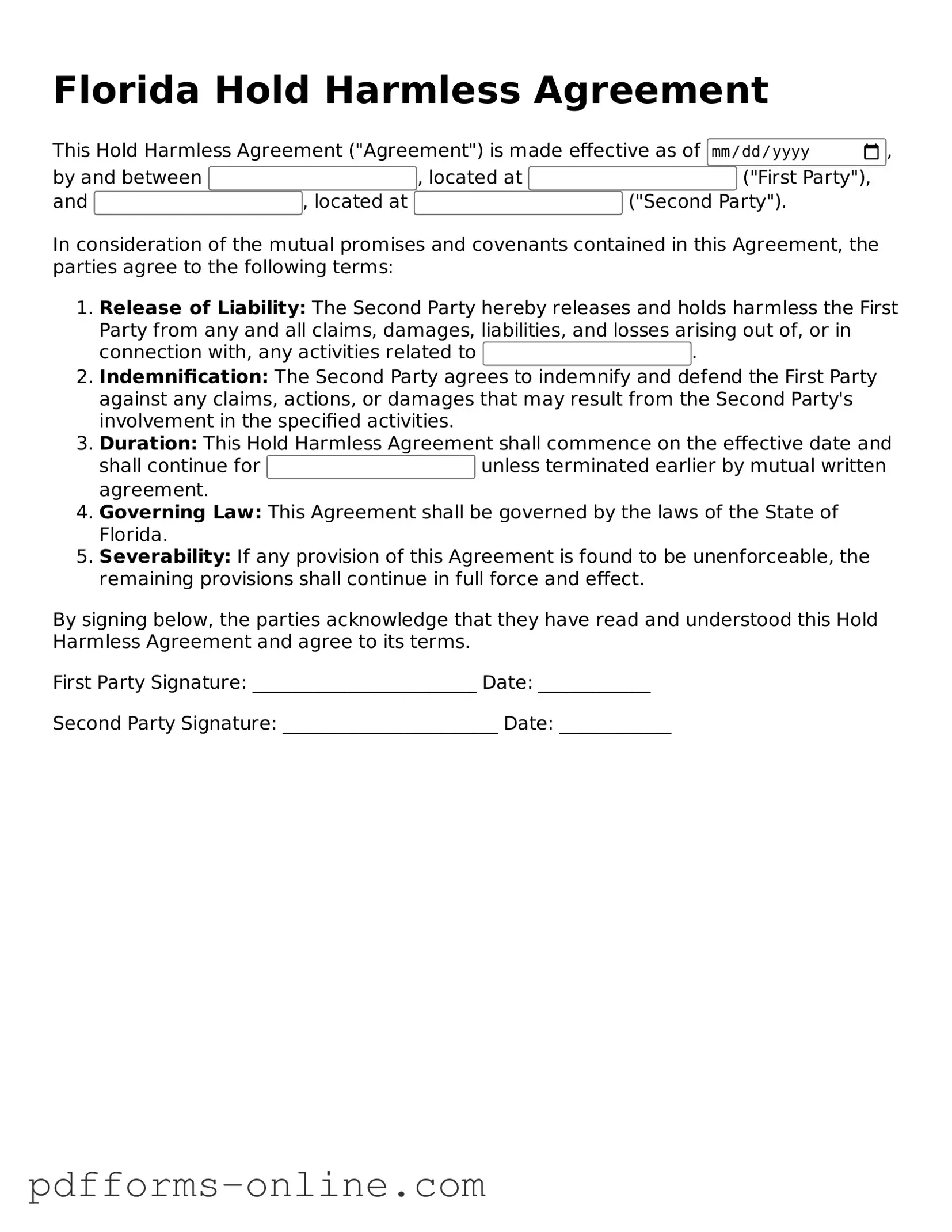The Florida Hold Harmless Agreement is similar to a Liability Waiver. A Liability Waiver is a document in which one party agrees not to hold another party responsible for any injuries or damages that may occur during a specific activity. Like the Hold Harmless Agreement, it protects the party providing the service or activity from legal claims. Both documents require clear language outlining the risks involved and the consent of the participant, ensuring that the party waiving their rights understands the implications of their decision.
Another document akin to the Hold Harmless Agreement is the Indemnity Agreement. This agreement involves one party agreeing to compensate another for any losses or damages incurred. While the Hold Harmless Agreement primarily focuses on protecting against claims, the Indemnity Agreement goes a step further by providing financial protection. In both cases, the intent is to allocate risk and responsibility, but the Indemnity Agreement often involves a monetary aspect that is not always present in a Hold Harmless Agreement.
The Rental Agreement shares similarities with the Hold Harmless Agreement, particularly in contexts where property is involved. A Rental Agreement outlines the terms under which one party can use another's property, often including clauses that limit liability for damages or injuries. Both documents seek to clarify responsibilities and protect the property owner from potential legal claims, ensuring that renters understand the risks associated with using the property.
The Service Agreement is another document that bears resemblance to the Hold Harmless Agreement. A Service Agreement outlines the terms of service between a provider and a client, often including provisions that limit liability for the service provider. Just like the Hold Harmless Agreement, it aims to protect the provider from lawsuits stemming from the services rendered. Both documents emphasize the need for clear communication about risks and responsibilities involved in the service relationship.
In the realm of construction, the Construction Contract often includes Hold Harmless provisions. This contract outlines the terms between contractors and clients, detailing responsibilities, timelines, and payment. Similar to the Hold Harmless Agreement, these provisions protect contractors from liability related to accidents or damages that may occur during the construction process. Both documents emphasize the importance of risk management and the need for clear agreements to prevent disputes.
The Non-Disclosure Agreement (NDA) also shares some characteristics with the Hold Harmless Agreement, particularly in the context of protecting sensitive information. While an NDA focuses on confidentiality, it often includes clauses that limit liability in case of a breach. Both agreements aim to protect parties from potential legal repercussions, ensuring that the risks associated with sharing information or engaging in activities are clearly defined and understood.
Lastly, the Partnership Agreement can resemble the Hold Harmless Agreement in terms of risk allocation among partners. A Partnership Agreement outlines the roles, responsibilities, and liabilities of each partner in a business venture. Similar to the Hold Harmless Agreement, it seeks to clarify how risks will be shared and managed among partners, helping to prevent misunderstandings and legal disputes down the line.
